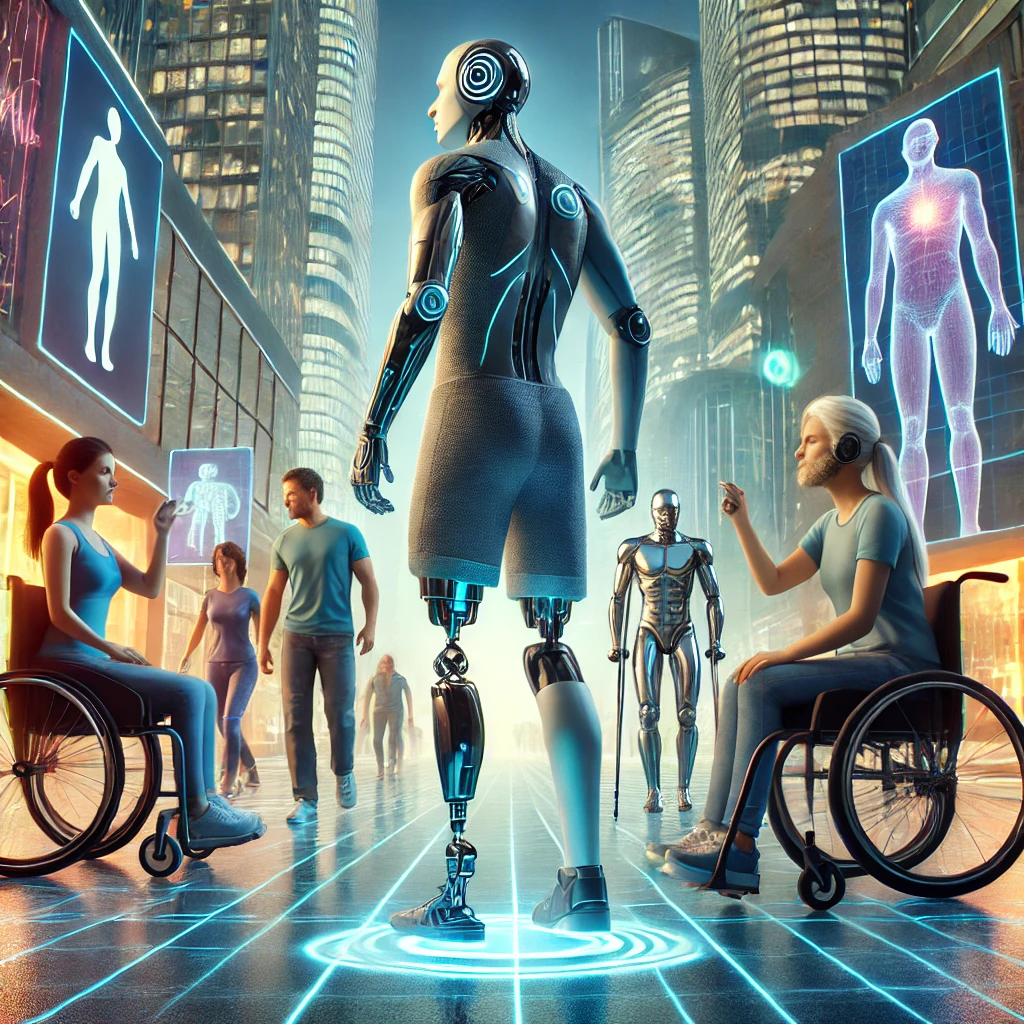Introduction
Assistive technology has played a crucial role in promoting inclusion and accessibility for people with disabilities. With advancements in Artificial Intelligence (AI), robotics, and biomechanics, innovative devices are transforming the mobility and independence of millions of people around the world. Bionic prosthetics, smart wheelchairs, and exoskeletons are no longer just futuristic concepts, but real solutions that significantly improve users’ quality of life. However, despite the progress, challenges such as high costs and limited access still need to be overcome for these innovations to be widely adopted. In this article, we explore the main advances in assistive technology, their benefits, and the outlook for the future.
Advances in Assistive Technology
Assistive technology has evolved rapidly, driven by the integration of Artificial Intelligence (AI), robotics, and wearable devices. These innovations are transforming the lives of millions of people with disabilities by offering greater autonomy and quality of life. The sector is growing rapidly and is expected to reach a global value of $26 billion by 2025.
Among the main inventions are bionic prosthetics, which use advanced algorithms to capture electrical signals from the body, enabling more natural and intuitive movements. Smart wheelchairs are another major development, allowing control via voice commands and other adaptable interfaces, increasing users’ independence. Exoskeletons are being developed to assist people with paralysis, enabling partial recovery of movement and supporting motor rehabilitation.
In Brazil, national programs aim to expand access to these technologies, but challenges such as high costs and limited availability still hinder large-scale adoption. However, investments in research and development, international partnerships, and initiatives focused on digital inclusion have the potential to make these innovations more accessible in the coming years.
Among the most recent advancements in the field of assistive technology, standout devices include:
- Smart knee prosthetics, offering precise and comfortable movements across different types of terrain, providing better adaptability for the user.
- Neuromuscular stimulation suits, which assist in the rehabilitation of patients with paralysis or neurological diseases, enabling functional mobility improvements.
- Myoelectric control systems, which use sensors to detect muscle signals and control grip patterns in upper limb prosthetics, ensuring greater precision and natural motion.
- High-tech orthoses, designed to adjust knee resistance in real-time, providing more stability and fluidity in movement.
Continuous advancements in biomechanics, neuroscience, and artificial intelligence have enabled the development of more efficient and personalized solutions. The future of assistive technology points to increasingly integrated and intuitive devices, promoting inclusion and autonomy for millions of people around the world.
The Benefits of Assistive Technology
The advancement of assistive technology has brought significant benefits to people with disabilities, contributing to independence, inclusion, and improved quality of life. Through the use of artificial intelligence, biomechanics, and neuroscience, devices like bionic prosthetics, smart wheelchairs, and exoskeletons are revolutionizing mobility and accessibility.
- Greater Independence and Autonomy
Modern assistive technologies allow users to perform daily activities more easily and without constantly relying on others. Bionic prosthetics, for example, can interpret electrical signals from the body, enabling more natural and responsive movements. Smart wheelchairs, controlled by voice commands or adaptable interfaces, enhance mobility in different environments, making movement more intuitive and efficient. - Social and Professional Inclusion
The accessibility provided by these innovations extends beyond the home environment. In the workplace, technologies such as advanced orthoses and myoelectric control systems allow individuals with motor limitations to perform tasks with greater precision and comfort, expanding professional opportunities. Furthermore, enhanced mobility enables active participation in society, fostering engagement in cultural, educational, and sports activities. - Improved Quality of Life and Health
The use of exoskeletons and neuromuscular stimulation suits has shown great potential in rehabilitating patients with paralysis or neurological conditions. These devices help strengthen muscles, reduce complications associated with prolonged inactivity, and even restore some lost mobility. In addition, modern assistive technologies are designed to ensure comfort and ergonomics, minimizing the physical impact of continuous use on the user’s body. - Personalization and Adaptation to Individual Needs
Another major benefit of innovations in this sector is the ability to personalize devices. AI-based control systems adjust prosthetics and orthoses to meet each user’s specific needs, ensuring a better fit and more efficient performance. This flexibility allows technologies to be applied in various contexts—from mobility to delicate tasks that require fine motor skills. - Impact on Longevity and Well-Being
The accessibility and support offered by these technologies significantly reduce the physical and emotional strain on users. With fewer limitations imposed by disability, there is a positive impact on mental health, promoting higher self-esteem and quality of life. Additionally, by preventing secondary issues such as muscle pain or circulatory complications, assistive solutions contribute to healthier and more active aging.
Conclusion
Advancements in assistive technology represent a major step toward a more inclusive society, where barriers to mobility and social participation are diminished. The impact of these innovations goes far beyond physical rehabilitation, encompassing independence, emotional well-being, and professional inclusion for millions of people. However, for this technological revolution to reach its full potential, investments in accessibility, public policy, and research are essential. The future of assistive technology lies in increasingly smart, integrated, and personalized solutions—making inclusion an achievable reality for all.

